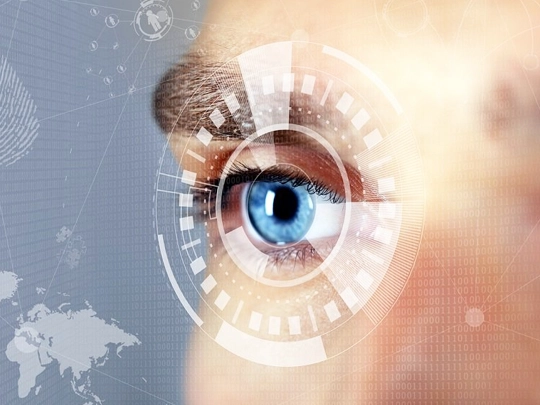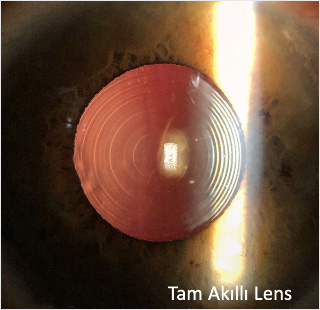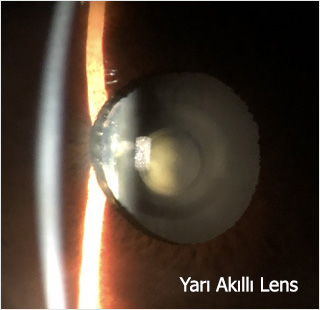
Since we established our smart lens department, we have experienced numerous new developments. In this section, we will discuss these innovations. Before reading this section, I recommend reading our smart lenses page, which contains basic information about smart lenses.
Recently, we have seen the following smart lens definitions on websites and in the media: Hi-Tech Smart Lens, Premium Smart Lens, Lifetime Smart Lens, Permanent Smart Lens, Personalized Smart Lens, Customized Smart Lens, Trifocal Smart Lens, Multifocal Smart Lens, Semi-Smart Lens – EDOF lenses, Less Smart Lens – Monofocal-like Lenses, Smart Lens, Smart Lens...
All these different definitions are essentially marketing tactics representing the same lenses. Unfortunately, due to increasing competition between commercialized eye hospitals, each hospital or center is in a race to attract patients by using different names and claiming to have a different smart lens. Therefore, to clear up any confusion for our patients, I want to explain the current developments in smart lens technology rather than these different commercial definitions
As we mentioned on the Smart Lens page, these lenses are not actually "smart"; the term "smart lens" is a commercially created term. Trifocal lenses that provide glasses-free vision at distance (2 meters and beyond),intermediate (phone and computer distance),and near (reading distance) are named in this manner.
Following this logic, the other lens types discussed in this section are also classified as semi-smart or less smart based on their glasses-free vision capacities for near distances. These are somewhat humorous terms aimed more at making it easy for patients to understand rather than being medical terms.
Essentially, we can categorize Smart Lenses into three groups:
The term "smart lens" is essentially used for acrylic lenses implanted into the eye that provide glasses-free vision at distance, intermediate, and near distances. All of these are already lifetime smart lenses, permanent smart lenses. They are also referred to as trifocal smart lenses or the equivalent multifocal smart lenses because they cover these three distances.

The term "premium smart lens" may refer to the higher quality brands of smart lenses, but since we only use the highest quality smart lenses from the USA in our clinic, all our lenses are premium smart lenses. In conclusion, regardless of what smart lenses are called, they are intraocular lenses that work on the same principle and serve the same purpose, even if produced by different companies. While trifocal smart lenses provide good vision at all distances, due to their structure, some light scattering and haloing in dark conditions is inevitable.
For this reason, we have started using some new semi-smart or less smart lens types that may require a low-powered near vision glasses, but offer reduced light scattering at night. We also use these lenses according to our patients' expectations.
This term refers to lenses, especially those manufactured in the USA and approved for use worldwide by the FDA. The smart lenses used in our clinic are the premium smart lenses from Alcon, Zeiss, and J&J. They can also be referred to as Hi-Tech smart lenses.
Especially in recent years, many lower-cost smart lenses have entered the market. Some of these lenses create problems with vision quality and glare due to their optical properties, while others may degrade over time due to poor materials, leading to a decrease in vision quality.
When entrusting the most important of your senses, vision, to a lens that will remain in your eye for the rest of your life, it is essential to prioritize quality over cost and avoid irreversible problems. This has always been our fundamental approach.
These lenses, referred to as extended focus distance lenses, can have various features. However, these types of lenses primarily aim to provide glasses-free vision at distance and intermediate distances, i.e., computer and phone distances.

Another advantage over fully smart trifocal lenses is that they cause less light scattering at night. However, they are not as strong in close-up vision as fully smart lenses.
For reading fine print, these lenses require the addition of low-powered reading glasses. However, these lenses are good choices for individuals who do not want light scattering at night, such as night workers, long-distance drivers, and who do not engage in extensive reading of fine print. They can also be safely applied to eyes that have undergone laser surgery, glaucoma patients, and diabetics.
When using these lenses, one eye can be slightly adjusted for myopia to provide slightly better near vision with at least one eye.
There are also some lenses that offer slightly better near vision than regular lenses at a slightly higher cost. With these lenses, it is possible to see the phone under suitable lighting conditions. However, since they do not have different focal points, they are not actually classified as smart lenses.
They do not cause light scattering at night, but they are not as successful as fully or semi-smart lenses for intermediate and near vision. They require the use of reading glasses.
This is actually one of the most challenging issues for our patients. Making a decision based on a three-minute conversation is very stressful and exhausting for the patient. At this point, it is crucial for the doctor to understand the patient's needs and meet their expectations correctly. Otherwise, even if the surgery is successful, patients may be unhappy.
Especially for patients who will have fully smart lenses implanted, it should be explained that some light scattering at night is inevitable. This is a price we pay for being able to see up close without glasses using today's best technology.
If our patient does not want light scattering at night but does not engage in extensive close-up work, mostly looking at computer and phone screens up to 40-50 centimeters, then EDOF and similar semi-smart lenses we classify as lenses are very good options.
Also, patients who do not want to pay the high costs of these lenses, are not very bothered by wearing glasses up close but want to see their phones from time to time can choose the monofocal variations, which we call less smart lenses. Again, if our patients want zero light scattering at night, non-smart, monofocal lenses are more suitable.
Another question we frequently encounter is whether smart lenses have side effects. As mentioned above, the most significant problem with trifocal smart lenses is some light scattering at night. However, this situation is well-tolerated and is not bothersome for most people.
Nevertheless, the better a lens shows near vision without glasses, the more inevitable the light scattering will be in night lights. Patients who do not want to experience this problem tend to be happier when they choose EDOF lenses.
In conclusion, which smart lens is more suitable for an individual should be chosen according to the condition of their eyes, examination findings, the patient's profession, daily living conditions, and the patient's expectations. Choosing the right doctor is crucial at this point. Prof. Dr. Ahmet Akman has been performing cataract surgeries for approximately 30 years.
He has performed over 35,000 cataract surgeries and more than 2,000 smart lens implants. He has provided training to eye doctors in many countries as an invited speaker at scientific publications and international meetings. All your questions about smart lenses can be answered during the consultation after the examination, and it will be possible for you to understand whether this method is suitable for you or not.
You can call us immediately for detailed information, consultation or appointment.
Contact information